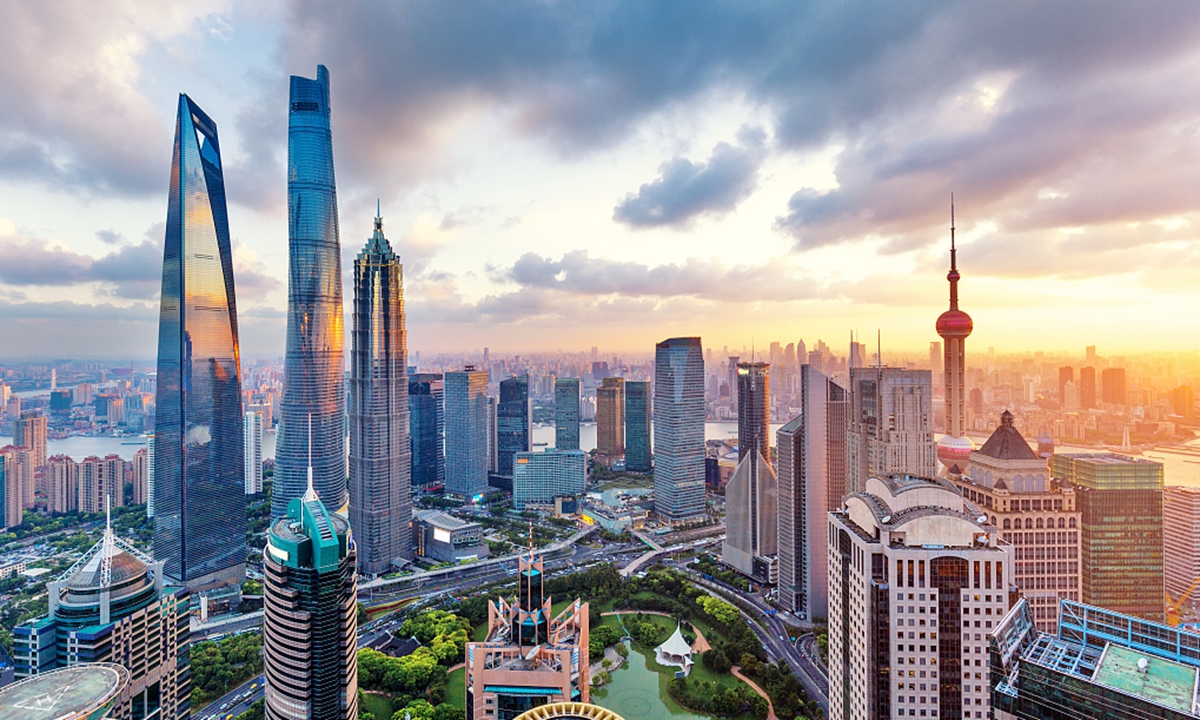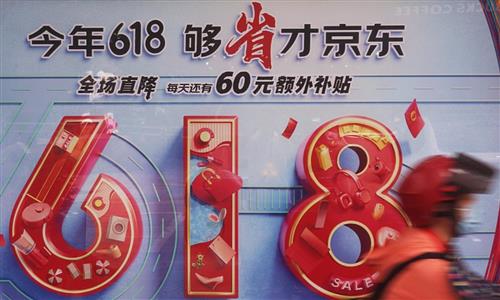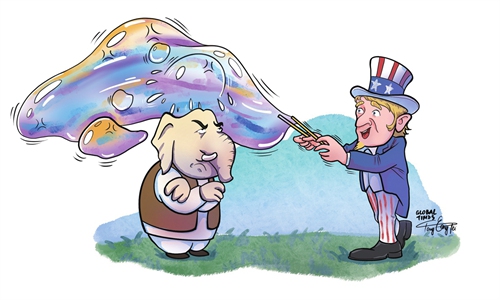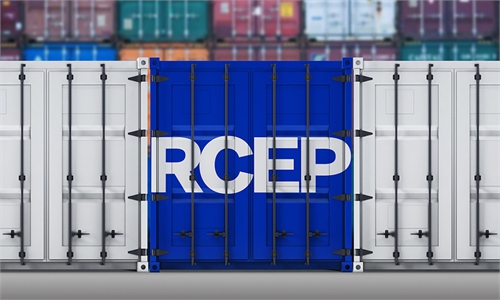
Lujiazui Photo:VCG
Although China's economy picked up impetus in the first quarter with an impressive growth rate of 4.5 percent, the government should continue to be more proactive and ramp up its fiscal and financial policy support to ensure the second quarter GDP growth to reach seven percent or above. And, the average monthly growth rate from July to December this year should be no lower than five percent so that the annual growth will reach 5.2 percent or above.The country needs to maintain a relatively higher economic growth rate to generate sufficient employment opportunities for China's large cohort of young job-seekers. The National Bureau of Statistics reported last month that the unemployment rate for youth between 18-24 years was hovering above 20 percent in April, a major concern for policymakers.
It is real that the foundation of China's economic recovery post-COVID-pandemic is not solid enough as the international situation remains complicated and uncertain, while the domestic double economic pressures of flattening demand and weakening expectations have yet to significantly improve. To make things worse, the US-led technology assault on China, or "tech decoupling," hasn't abated, forcing China to depend on itself and reduce its reliance on technology imports from America.
Now, the government is spearheading a national effort to ramp up science and technology research and development. China's private companies should follow the government's lead and deploy more money into technology innovation. In a sense, the high rate of public spending on science and technology should induce or "crowd in" more spending by private companies in pursuit of their long-term profit gains, while strengthening China's overall competitiveness in the world.
It is of great importance to bear in mind that maintaining economic growth while keeping inflation at bay is what 1.4 billion Chinese people collectively aspire for. In business management theory, it is crucial to make the market force play the decisive role of resource and capital distribution across all types of enterprises - state-owned, privately-owned or foreign-backed. Only a market-regulated economy can align with true demand, enhance business operating efficiency, and achieve real and sustained economic growth.
The country's economy grew by 3.0 percent last year, dragged down by harsh COVID-19 pandemic lockdown measures. In the coming months, it is important for policymakers to strike a better balance between managing the fiscal and financial policy and overall economic and social development, primarily focusing on economic expansion so that more jobs are created.
Effective government policies to shore up the weakened real estate sector are of great urgency and significance to bolster economic growth. The sector's investment fell by more than 10 percent in 2022, a steeper drop compared to previous years.
Grumblings from heavily indebted developers about absence of a tailored real estate rescue plan from the government have remained constant in the background. Benchmark mortgage rates could be further reduced to stimulate and incentivize home-buyers to buy property and rejuvenate the sector.
Economists have warned that a nationwide property market slump will dampen public confidence and restrain consumer appetite for shopping on big-ticket items like television sets, refrigerators and cars, because the average households feel their net worth associated with their property is being dented. Month-on-month home price falls, seen in many Chinese cities, should be reversed. To support home sales, the highly restrictive policy to discourage property investment should be loosened promptly, according to a number of market observers.
At the same time, the government could continue to increase investment targeting infrastructure build-up. As always, encountering an economic slowdown and facing a sputtering growth engine, China has in the past counted on the government's extraordinary ability to deploy stimulus and rev up infrastructure investment to fuel up economic expansion and tide over crunches.
According to official data, year-to-date input in infrastructure has risen by 8.9 percent year-on-year as of the end of April. To stimulate the economy which has shown some signs of cooling off, it is important to maintain a national infrastructure program, including high-speed rail, expressways, ports, subways, reservoirs, green energy and more. Last year, fixed asset investment reached 58.7 trillion yuan ($8.2 trillion), providing a strong back-up for Chinese economy.
With respect to increasing domestic consumption, it is imperative for employers and state-owned enterprises in particular, to protect their workers' jobs and income. Any deterioration in urban employment and erosion in incomes will heap more pressure on retail consumption and weigh on the economy. Last year, the average salary of Chinese urban employees reached more than 114,000 yuan, an increase of 6.7 percent year-on-year. With the economy on a recovery course, workers' salary ought to register a commensurate rise this year.
And, the government should continue to move toward bolstering the sprawling private sector in the country, supporting the internet-based platform giants in particular as Tencent, Alibaba, ByteDance, Meituan, JD and Didi are major job providers across the country. According to the national statistical bureau, China's urban jobless rate stayed at 5.4 percent in April, the highest since June, with the unemployment rate for job-seekers between the ages of 16 and 24 remaining elevated at 20.4 percent.
China could keep on building up its tier-2 and tier-3 cities as well as large city-clusters to ramp up urbanization which requires long term, strong fiscal support from the government to improve urban infrastructure and amenities. There is still significant room for the country's general urbanization rate to rise to the levels of the developed countries. In the course of rapid urbanization, industrial capacity is expanded and higher GDP is enabled.
By all metrics, China's economy remains on the track of recovery, though is not currently firing on all cylinders. The Caixin manufacturing PMI in May picked up momentum to reach 50.9 from 49.5 in April, while Caixin services PMI surged to 57.1 in May, up 0.7 points from the previous month, pointing to continuous expansion of the Chinese economy. So it is necessary for policymakers keep on course, shepherding the economy to grow by around 5 percent in the following years.
The author is an editor with the Global Times. bizopinion@globaltimes.com.cn



